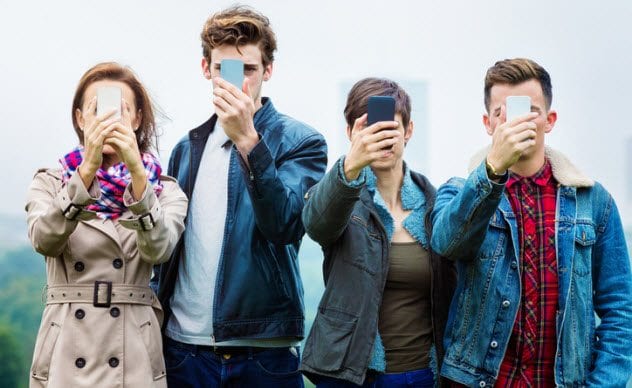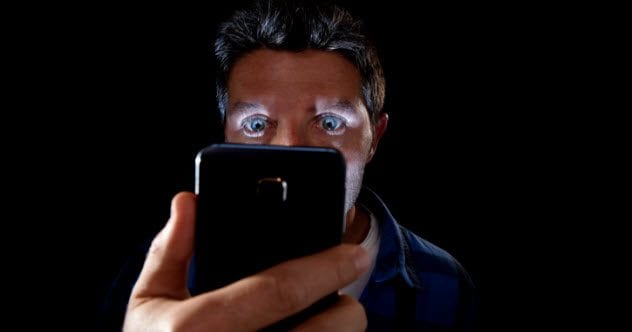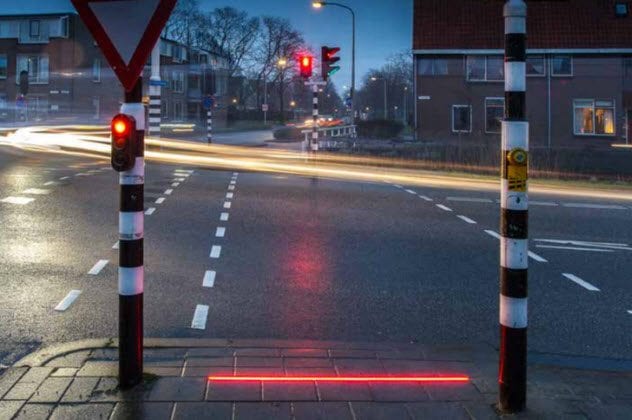 Animals
Animals  Animals
Animals  History
History 10 Most Influential Protests in Modern History
 Creepy
Creepy 10 More Representations of Death from Myth, Legend, and Folktale
 Technology
Technology 10 Scientific Breakthroughs of 2025 That’ll Change Everything
 Our World
Our World 10 Ways Icelandic Culture Makes Other Countries Look Boring
 Misconceptions
Misconceptions 10 Common Misconceptions About the Victorian Era
 Mysteries
Mysteries 10 Strange Unexplained Mysteries of 2025
 Miscellaneous
Miscellaneous 10 of History’s Most Bell-Ringing Finishing Moves
 History
History 10 Great Escapes That Ended Right Back in Captivity
 Weird Stuff
Weird Stuff 10 Fascinating Things You Might Not Know About Spiders
 Animals
Animals 10 Animals That Humiliated and Harmed Historical Leaders
 History
History 10 Most Influential Protests in Modern History
 Creepy
Creepy 10 More Representations of Death from Myth, Legend, and Folktale
Who's Behind Listverse?

Jamie Frater
Head Editor
Jamie founded Listverse due to an insatiable desire to share fascinating, obscure, and bizarre facts. He has been a guest speaker on numerous national radio and television stations and is a five time published author.
More About Us Technology
Technology 10 Scientific Breakthroughs of 2025 That’ll Change Everything
 Our World
Our World 10 Ways Icelandic Culture Makes Other Countries Look Boring
 Misconceptions
Misconceptions 10 Common Misconceptions About the Victorian Era
 Mysteries
Mysteries 10 Strange Unexplained Mysteries of 2025
 Miscellaneous
Miscellaneous 10 of History’s Most Bell-Ringing Finishing Moves
 History
History 10 Great Escapes That Ended Right Back in Captivity
 Weird Stuff
Weird Stuff 10 Fascinating Things You Might Not Know About Spiders
10 Signs Of The Smartphone Zombie Plague
Smartphones have transformed society. Paradoxically, this powerful social tool also isolates us. People report staggeringly high rates of device addiction. Phone distraction is leading to a spike in traffic fatalities and crimes committed against gamers.
Some urban areas are capitulating with infrastucture to coddle the phone obsessed. Meanwhile, mental health professionals lobby to include mobile phone and technology addiction in the Diagnostic and Statistical Manual for Mental Disorders.
There is no doubt about it—we are in the midst of a smartphone zombie plague.
10 Smombie

In November 2015, “smombie” became Germany’s official Youth Word of the Year. This portmanteau of “smartphone” and “zombie” reflects a genuine threat to public safety. After multiple phone-related tram accidents, Augsburg installed traffic lights at ground level.
So far, two stations are equipped with the experimental illumination. Reaction is mixed to the spread of 16 red LED lights. A resident noted, “The lights are ideal for kids, who notice them immediately.”
Cologne also equipped three stations with these bompeln—a German language portmanteau meaning “ground traffic lights.” In Munich, the death of a 15-year-old girl who was distracted with headphones at a tram stop has elicited a different response. Dangerous crossings were equipped with beacons that communicate to smartphones via an app called “Watch Out!”
A recent study of European capitals discovered that one-quarter of people between 25 to 35 years old are glued to phone screens while walking.
9 Smartphone Addiction

New York psychotherapist Nancy Colier recently released The Power of Off, a work exploring the negative impact of smartphone overreliance. According to Colier, the average person checks their phone every six minutes—or 150 times a day. Young adults send over 100 texts per day, and 46 percent consider their phone something that they “couldn’t live without.”
Researchers at the University of Maryland recently discovered that the majority of students in 10 counties experienced distress when they tried to unplug for 24 hours. One in three revealed that they would rather give up sex than their smartphones.
The health risks are serious. “Without open spaces or downtime, the nervous system never shuts down—it is in constant fight-or-flight mode,” warned Colier. “We are wired and tired all the time. Even computers reboot, but we’re not doing it.” Colier points out that real-life connections provide us with nourishment. Digital ones leave us lacking.
8 The Perils Of Pokemon Go

Pokemon Go was a smash success. However, within one week of the game’s launch in July 2016, reports of the peril facing players flooded the media. The scavenger hunt design led gamers into the real world in search of Pokemon characters.
Many found more than they bargained for. Shayla Wiggins of Wyoming stumbled across a festering corpse on a riverbank. In Missouri, thieves honed in on the app’s geolocation feature to ambush unsuspecting players.
In January 2017, a 60-year-old Virginia gamer was shot dead by a security guard. Jiansheng Chen played Pokemon Go from his minivan near Chesapeake’s River Walk clubhouse. A security guard approached, a confrontation ensued, and five bullets were fired through the van’s windshield.
Chen was unarmed and did not speak any English. Lawyer Greg Sandler does not believe that language caused the conflict. Hired through Citywide Protection Services, the guard was not supposed to carry a gun.
7 Chongqing’s Smartphone Lane

In September 2014, Chongqing, China, opened a separate sidewalk for smartphone users. For now, the lane is separated by white spray paint from the thoroughfare for “busy” people.
Some see the spray paint as a primitive iteration of a technology that will evolve into alerts that users have ventured beyond the “phone zone.” The 30-meter (100 ft) lane is accompanied by a sign reading: “First mobile phone sidewalk in China.”
The Chongqing smartphone lane is not the first of its kind. National Geographic TV channel painted a similar smartphone lane in Washington, DC, as part of a social experiment.
In 2012, Philadelphia announced that it was opening “e-lanes” for smartphone users. It turned out to be an April Fools’ Day joke to highlight a growing public safety issue. Injuries from distracted walking in the US jumped from 256 in 2005 to a staggering 1,506 emergency room visits in 2010.
6 Sweden’s Smartphone Problem

Over the past decade, hundreds of Swedish pedestrians have been injured while glued to their smartphones. In May 2016, the Swedish Transport Agency announced that no less than 650 Swedes had been injured so seriously in smartphone-related accidents that they required emergency care.
“The most common and most serious is that they get hit by motor vehicles,” revealed agency spokesperson Tomas Fredlund. “Almost as common is that they walk into lampposts, but the injuries aren’t as serious then.”
A recent study of 14,000 smartphone users across six European capitals suggests that Stockholm residents are most prone to put themselves at risk in traffic. In response to this pervasive problem, artists Jacob Sempler and Emil Tiisman created fake signs warning pedestrians and motorists of smartphone zombies.
In November 2015, these signs popped up throughout the Swedish capital. They depict a male and female pedestrian with their eyes glued to phone screens.
5 Phantom Phone Alerts

Almost everyone has experienced it. You feel a buzz or hear a ding, but when you check your phone—it’s blank. These phantom phone alerts may be a sign of smartphone addiction—and neurosis.
University of Michigan’s Daniel Kruger revealed, “When people have addictions, they are hypersensitive to a rewarding stimulus.” Kruger and his team recruited nearly 800 undergraduates. First, the participants filled out a Ten Item Personality Inventory test. Then they discussed experiences with phantom alerts before they were given a survey called the Mobile Phone Problem Use Scale.
Kruger discovered that those who tested higher for conscientiousness and emotional stability were less at risk for phone addiction. Women reported higher rates of dependency than men.
In 2013, researchers attempted to add mobile phone and technology addiction to the Diagnostic and Statistical Manual of Mental Disorders. They were unsuccessful. Kruger believes that his results support the existence of smartphone addiction.
4 Seoul Smartphone Obsession

In 2016, Seoul officials announced that smartphone-related traffic accidents had tripled in the past five years. They did not have data on pedestrian incidents, but the number was high enough to raise the concern of city officials.
Seoul launched a six-month, $33,000 experimental project placing signs in five of the city’s busiest pedestrian areas. The signs said: “Be Careful of Smartphones While Walking.” Walker-texters revealed that the signs will not have an impact on people whose eyes are glued to their screens.
South Korea has the world’s highest rate of smartphone ownership—with 88 percent of adults possessing these devices. Chongshin University’s Hyun-Seob Cho reports, “Research shows 15 percent of smartphone users in South Korea are addicted.”
Cho warns that the key symptoms of the addiction are feeling like the phone is an extension of your body and feeling nervous without it. In extreme cases, people are hesitant to shower without their smartphones.
3 Dutch Pavement Lights

In February 2016, a Dutch town announced the introduction of pavement lights at pedestrian crossings to guide “smartphone zombies” safely across. The lights have been installed on a trial basis in Bodegraven at a busy intersection near a school.
The light strips are designed to be seen by people who have their eyes glued to devices. The colors correspond to traffic signals—green for go, red for stop. Town council member Kees Oskam revealed that smartphone distraction has come “at the expense of attention to traffic.” Something needed to be done.
VVN, a Dutch traffic safety group, thinks that installing these lights “rewards bad behavior.” Spokesman Jose de Jong warned, “People must always look around them to check if cars are actually stopping at the red signals.”
The company that developed the “smartphone zombie” lights hopes that a successful trial run in Bodegraven will bring in new orders. With similar lights being introduced elsewhere, this is likely.
2 Hong Kong’s Head-Down Tribe

According to Ipsos Group research, more than 80 percent of Hong Kong residents between the ages of 15 and 34 own a smartphone. Screen obsession has become so rampant that a Cantonese expression has developed to describe the phenomenon: dai tau juk (“head-down tribe”).
The head-down tribe is having massive ramifications in Hong Kong. In February 2015, neurosurgeon Harold Cheng Kin-ming warned that head tilting from smartphone usage caused increased hospitalizations from excessive pressure on cervical vertebrae.
“Distracted walking” is not just unhealthy; it is a public nuisance. According to the MTR Corporation, distracted smartphone users walk blindly off trains, halt abruptly in corridors, and linger at the bottom of escalators and stairs to answer messages.
One commuter describes the “annoying and selfish [behavior as] getting worse and worse.” Smartphone users crossing roads pose the greatest threat to both pedestrians and motorists. In 2001, Hong Kong banned handheld devices for drivers.
1 Child Road Death Spike

In February 2017, the British Department for Transport reported that smartphone usage is leading to a spike in child road deaths. Child-pedestrian casualty data showed an increase of 6 percent in deaths and serious injuries between July and September 2016, compared to the same time period the previous year.
AA president Edmund King noted that older children in particular were susceptible to smartphone distraction. He insists that more needs to be done to educate this demographic.
In October 2016, a video hit the Internet showing a slow-moving SUV plowing into a two-year-old in Yueyang, China. The child’s mother lagged behind, completely absorbed in her smartphone. With her eyes glued to the screen, the mother failed to notice the vehicle moving.
By the time help arrived, the young girl was dead. Local government agencies have used the toddler’s passing to call for people to cut back on smartphone usage.
Dubbed the “Indiana Jones of ethnomusicology” by TimeOut.com, Geordie McElroy has hunted songs for the Smithsonian, Sony Music Group, and private collectors. A leading authority on occult music, he is also the singer of LA-based band Blackwater Jukebox.







